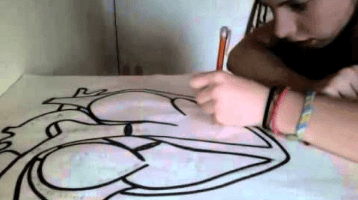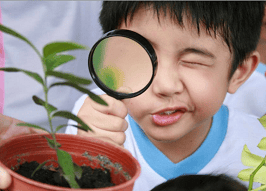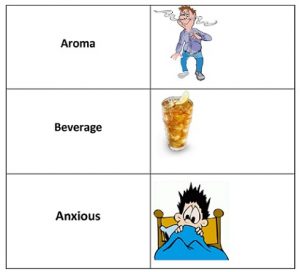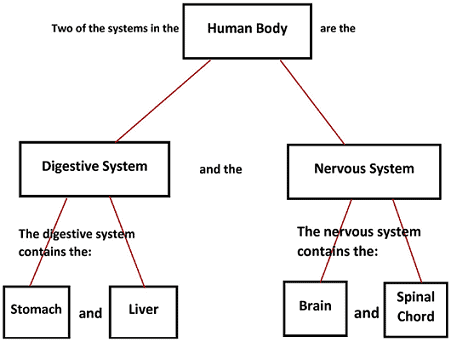How to Teach Children to Study Academic Content and Vocabulary

|
Getting your Trinity Audio player ready...
|
Studying can be a frustrating task when it doesn’t feel like you are retaining the concepts, you don’t know what to focus on, you are doing the same repetitive thing over and over, and you don’t feel prepared for the test. When children feel this way they often avoid studying, refuse to study, or shut down while studying. You may hear statements like “I don’t care!” “I hate this!” “I don’t understand this.” “I can’t do this.” etc.
In this article you will find several effective tips for studying written information (as in a textbook) and remembering vocabulary words (which is often required in science and social studies classes). These tips give directions on how to study and aim to make the session less frustrating and more meaningful, while giving your child a sense of accomplishment at the end of the session. For some of these strategies you or another adult or older child will have to participate and/or provide guidance until your child becomes more independent in his/her study skills.
Side-Note:
Remember to always stay calm when working with a child or student, even if you think they should be getting something that they are not getting. If you get frustrated with them, they may start to feel anxious, angry, inferior, stupid, etc. which will lead to a less productive studying session. Encourage your child to study a little each day (e.g. between 10 and 30 minutes depending on their age/grade and tolerance) rather than cramming for several hours the day before a test. For suggestions on ways to encourage children to complete tasks or assignments they do not want to do, read our articles 3 Ways to Use Timers to Encourage Homework and Chore Completion and How to Use Schedules to Improve Children’s Behavior
If your child is significantly struggling with remembering or understanding information, despite consistent practice and guidance, talk to your child’s school and/or doctor. They should be able to refer you to the appropriate professionals to determine what might be interfering with your child’s progress and what additional strategies might help.
Textbook Strategies:
1-Your child should read the summary questions for the chapter to get an idea of what will be on the test and what his teacher will expect him to learn from reading the textbook
2-Read the summary paragraphs to learn the main points and ideas of the chapter.
3-Go through the chapter, read the bold terms and look at the images, lists, and tables.
Doing all of this will give your child a quick overview of what he/she is expected to learn and what the chapter will cover.
Finally he/she can read through the chapter, which will be easier to understand once he already knows the important information that he is expected to take from reading the text.
Here is a short video that explains these strategies in more detail.
Make it Fun/Bring it to Life: Take a concept learned from the textbook/internet or classroom and have your child make it into a fun activity. Some options include:
- Playing teacher and having your child teach you the concept-when they can explain it to you-you know they’ve got it!
- Drawing a poster to illustrate the concept (e.g. draw the heart and label the different parts)-Studies demonstrate the positive effects of incorporating art into learning!

Acting out the concept-for example, locate plants in the community and identify the different parts or make up a short skit about the revolutionary war

Strategies for Remembering Vocabulary Words:
Must of us know the common strategy of using flash cards (putting the definition on one side and the word on the other) and then testing yourself or having others test you by looking at one side and saying what is on the other. For many children this is an effective strategy and a great way to study, but some kids they need alternative studying methods to help those definitions stick. Even for children who do well with flash ards, using alternative methods can make studying seem less daunting.
So…here are some additional strategies for your child to use:
1-Connect the word to a visual image.
You or your child can draw a picture to go with the vocabulary word or use Google Images to search for words. You could copy and paste the images or draw the images into a table to create a study guide or a matching worksheet (e.g., draw a line between the word and the matching picture).
For example, here are some fifth grade vocabulary words with corresponding pictures from doing a Google Images search

Remember, you can mix the pictures/words up to turn this into a matching activity. You can also make flashcards with the images on one side and the word on the other. When your child looks at the picture he has to say the word. When he looks at the word he has to describe the corresponding picture.
(Of course, this activity would be harder with more abstract words like accomplish and apparent) but have him try his best to find a picture or draw a picture that he can some how relate to the vocabulary word. If he is having trouble coming up with pictures, provide assistance.
When working with children on the internet, remember to turn on the Safe Search filter and restrict searches to the first two pages of the search result. Unfiltered search terms can bring up images that may not be age appropriate.
2-Put the word in a sentence, while trying to relate it to something familiar to you.
For example, as a child I used to get nervous when I went to birthday parties, so to help me remember the definition of the word anxious, I could create the following sentence:
When I was a kid, I felt anxious before walking into a birthday party.
Another great way to use sentences to make vocabulary words meaningful is through the use of a concept map. This cannot be used for random vocabulary words but if the words are all related to a specific theme (which is often the case in science and social studies), then a concept map is a great tool.
For example, here is a concept map to help students understand two of the major systems of the human body, the digestive system and the nervous system. While the systems are more complex than the way they are depicted below, this is just a sample to help you understand the basic idea of creating a concept map.

Take it to the next level by creating a concept map, writing the sentences, and drawing pictures or searching for pictures to go with each square in the map. You can turn it into an art activity by printing out pictures and pasting them onto your map.
3-Turn learning vocabulary into a movement activity.
For example, you could tape pictures and definitions to the wall. Call out or show your child/student a word and have him run to the matching picture or definition and then run back to you for you to call out the next word.
Research demonstrates that the inclusion of movement-based activities in their classes helps students concentrate better on academic studies.
4- Have your child/student write the definition in his/her own words.
If the word is aroma and the dictionary definition is a characteristic, usually pleasant odor, as of a plant, spice, or food, your child could write something like a pleasant smell that usually comes from spices, foods, or plants. If you can put it in your own words than you have an understanding of the meaning.
Try all four strategies for each word to really drive the meaning home…
1. Connect it to an image
2. Put it in a sentence
3. Play a fun movement activity
4. Write it in your own words
5-After your child has used these four strategies he can test himself (or work with a friend to test each other/or a parent can test a child) using the old fashioned flash cards method.
Remember to do a little each day so your child does not get overwhelmed and give your child breaks to engage in an activity of his choice after studying for a certain about of time.
Related Article: How to Use Graphic Organizers to Improve Reading Comprehension, Writing, Listening, Note Taking, and Study Skills
Thank you for visiting educationandbehavior.com. We provide free academic, behavioral, and social-emotional support for children! Browse our topics from the menu button at the top left of the page! Follow us on Facebook!
Please share this article with others!






